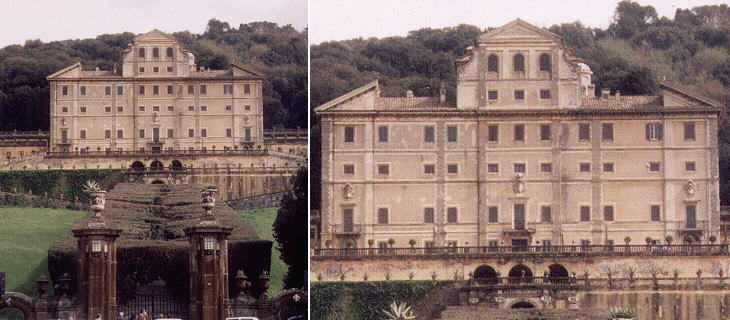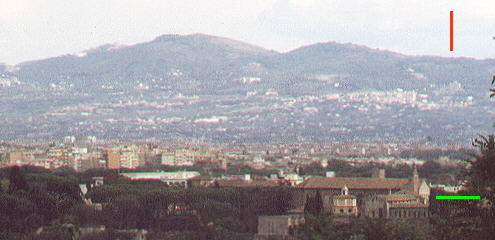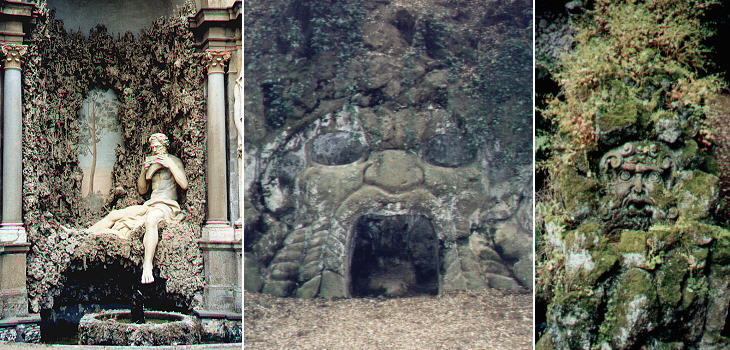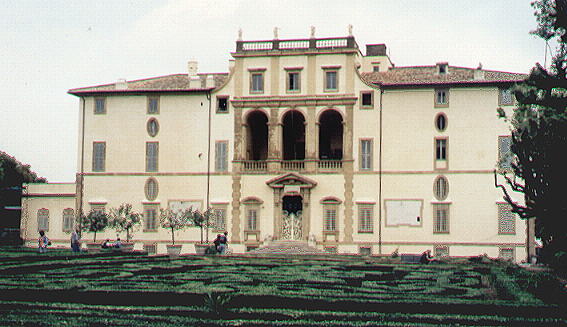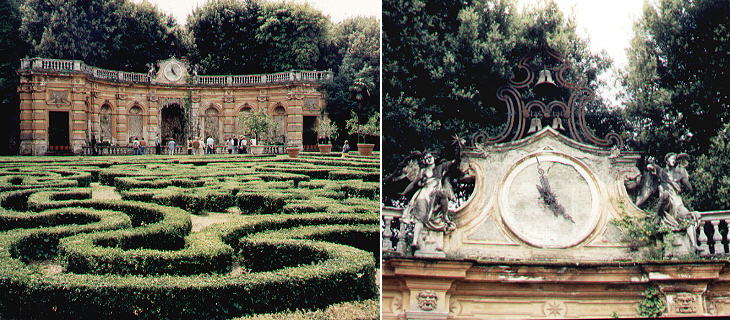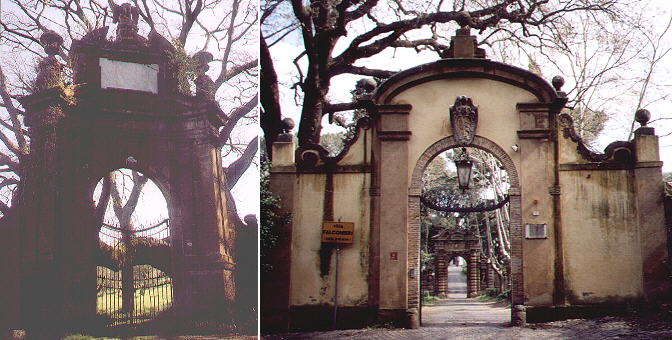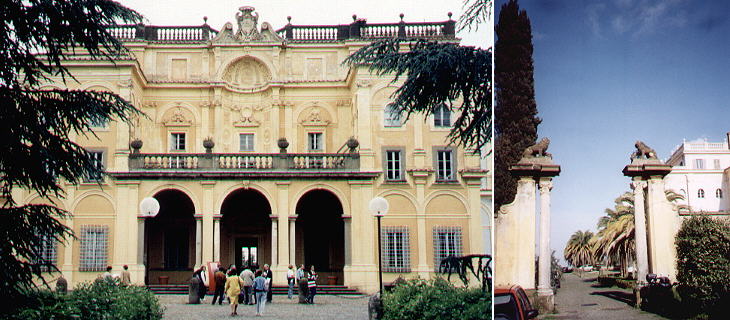  Giuseppe Vasi's Digression - Frascati - part two: the Villas
In this page:
The villas soon became an addition to the monuments of modern Rome and were portrayed in paintings and engravings. In general all the villas were façing Rome so that the guests could see the Roman campagna, the ruins of the aqueducts and in the distance Rome, signalled by the dome of St. Peter's. Villa Aldobrandini
Villa Aldobrandini was built at the beginning of the XVIIth century and it was designed by Giacomo della Porta and Carlo Maderno. It is a very imposing building, its size being emphasized by the terraces upon which it rests and it is clearly visible from Rome.
Villa Aldobrandini is not however a casino with many rooms because it does not have an inner courtyard: there are only "rooms with a view" either towards Rome or towards the cascades and the fountains behind the casino. It was used in summer and the landlords and their guests spent the day and the evening in the gardens and not indoors.
The design of the fountains attracted a lot of attention: they had to please both the eye and the ear and the cascades of Villa Aldobrandini were renowned because they activated some musical instruments held by statues portrayed in the act of playing them. The complex of fountains, niches, statues was called Teatro delle Acque (Water Theatre). In addition to the cascades, Villa Aldobrandini has both very elegant and formal fountains and more surprising "monstruos" fountains hidden in the rocks of the park. As the painter Federico Zuccari contributed to the decoration of the casino, maybe he suggested these strange faces which are very similar to those which decorate the windows of his own palace in Rome. Other views of Villa Aldobrandini can be seen in a page dedicated to pope Clemens VIII Aldobrandini. The image used as a background for this page shows a detail of the XVIIIth century decoration at the entrance of Villa Aldobrandini (an iron lily designed by Gabriele Valvassori). Villa Lancellotti
Villa Lancellotti is also known as Villa Piccolomini as it belonged to this family for more than two hundred years. The façade of the casino shows a simple late Renaissance design, while its central part was modified in the XVIIth century. Unlike most of the other villas it is not surrounded by a large garden, but what its garden lacks in size, it has in elegance.
Villa Falconieri
At the beginning of the XVIIth century Cardinal Scipione Borghese planned to open a new road which would link Rome with his possessions near Frascati. The road was never completed but the gate at its Frascati end (Portale delle Armi, which is shown in the next page) became a benchmark for the gates of the other villas. In 1733 cardinal Alessandro Falconieri thought to give to his villa an entrance (image on the left) comparable with Portale delle Armi, but in the years during which the property did not care about the villa a tree blocked the alley leading to the casino. The image on the right shows the already existing gates of Villa Falconieri.
The casino was initially built by monsignor Ruffini in 1549 and thus it is also called Villa la Rufina. It was acquired by the Falconieri in 1628 and the casino was entirely rebuilt in the late 1660s. In general its design is attributed to Francesco Borromini who worked for the Falconieri. The casino was recently repainted with light blue colours. Excerpts from Giuseppe Vasi 1761 Itinerary related to this page:
Go to page two. Next step in your tour of the Environs of Rome: Grottaferrata See my Home Page on Baroque Rome or my Home Page on Rome in the footsteps of an XVIIIth century traveller. |
All images © 1999 - 2004 by Roberto Piperno. Write to romapip@quipo.it

